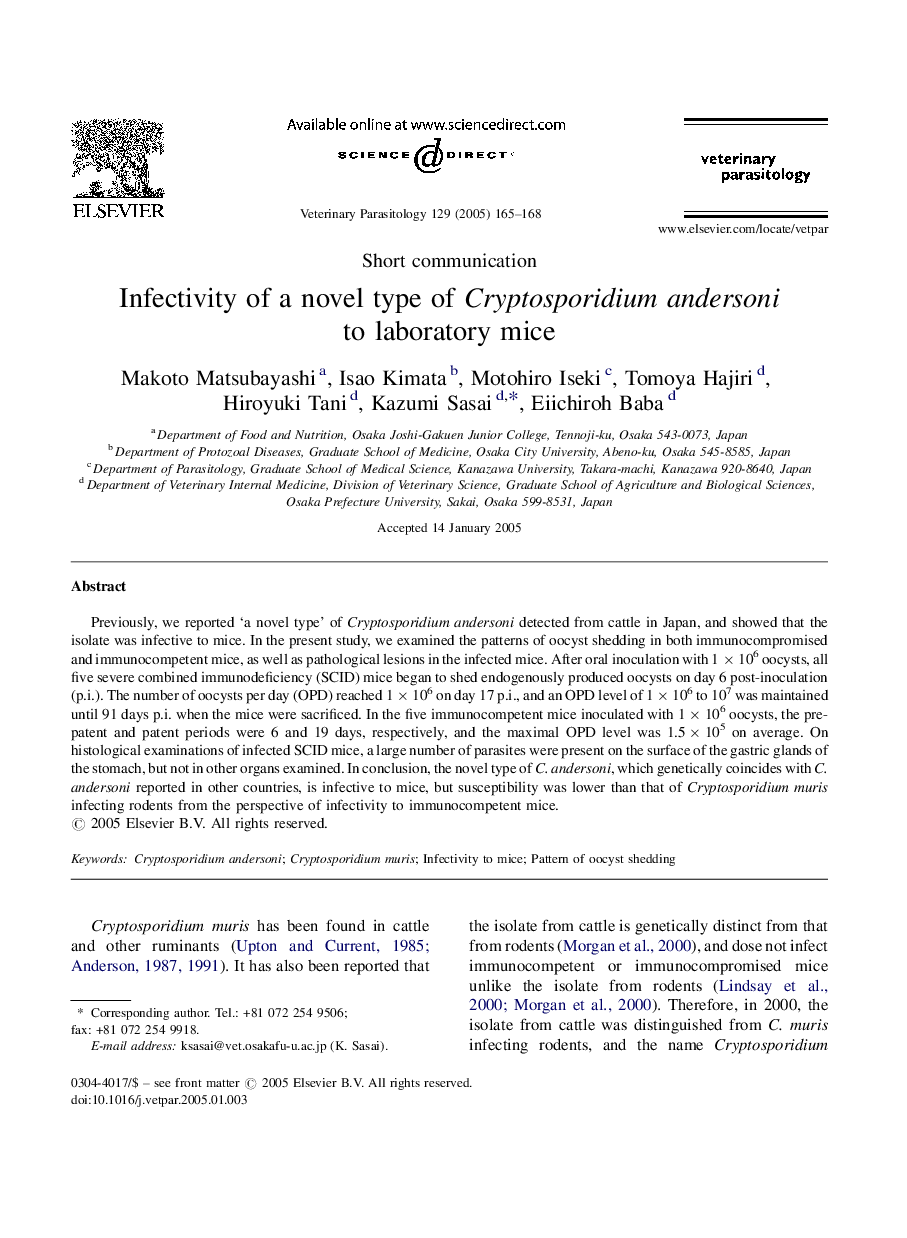| Article ID | Journal | Published Year | Pages | File Type |
|---|---|---|---|---|
| 8991256 | Veterinary Parasitology | 2005 | 4 Pages |
Abstract
Previously, we reported 'a novel type' of Cryptosporidium andersoni detected from cattle in Japan, and showed that the isolate was infective to mice. In the present study, we examined the patterns of oocyst shedding in both immunocompromised and immunocompetent mice, as well as pathological lesions in the infected mice. After oral inoculation with 1Â ÃÂ 106 oocysts, all five severe combined immunodeficiency (SCID) mice began to shed endogenously produced oocysts on day 6 post-inoculation (p.i.). The number of oocysts per day (OPD) reached 1Â ÃÂ 106 on day 17 p.i., and an OPD level of 1Â ÃÂ 106 to 107 was maintained until 91 days p.i. when the mice were sacrificed. In the five immunocompetent mice inoculated with 1Â ÃÂ 106 oocysts, the pre-patent and patent periods were 6 and 19 days, respectively, and the maximal OPD level was 1.5Â ÃÂ 105 on average. On histological examinations of infected SCID mice, a large number of parasites were present on the surface of the gastric glands of the stomach, but not in other organs examined. In conclusion, the novel type of C. andersoni, which genetically coincides with C. andersoni reported in other countries, is infective to mice, but susceptibility was lower than that of Cryptosporidium muris infecting rodents from the perspective of infectivity to immunocompetent mice.
Related Topics
Life Sciences
Agricultural and Biological Sciences
Animal Science and Zoology
Authors
Makoto Matsubayashi, Isao Kimata, Motohiro Iseki, Tomoya Hajiri, Hiroyuki Tani, Kazumi Sasai, Eiichiroh Baba,
